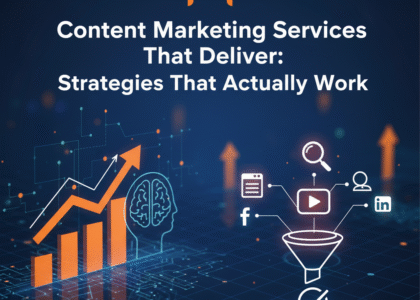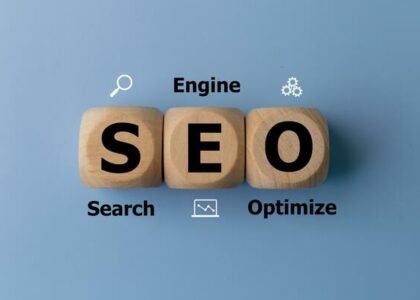introduction
In today’s digital age, e-commerce is a thriving industry, and online stores are popping up at an unprecedented rate. However, with millions of websites competing for attention, it’s becoming increasingly difficult to stand out. That’s where SEO (Search Engine Optimization) comes in. By optimizing your e-commerce website for search engines, you can increase your visibility, drive organic traffic, and ultimately, boost your sales.
In this guide, we’ll walk you through essential SEO strategies that can help your e-commerce store climb the rankings and attract more potential customers.
Why SEO is Crucial for E-commerce
Search engine optimization is one of the most effective ways to increase your store’s visibility online. When done correctly, SEO can:
-
Drive organic traffic: SEO helps your website rank higher in search results, making it easier for potential customers to find your products.
-
Increase conversions: By optimizing for relevant keywords and improving user experience, you can increase the likelihood of converting visitors into paying customers.
-
Enhance user experience: SEO encourages best practices for site structure, speed, and mobile optimization, improving the overall user experience.
Step 1: Conduct Thorough Keyword Research
Before you can optimize your e-commerce site for search engines, you need to know what keywords to target. Keyword research helps you understand what potential customers are searching for and how you can tailor your content to meet their needs.
How to conduct keyword research:
-
Use Keyword Tools: Tools like Google Keyword Planner, Ahrefs, and SEMrush can help you identify high-volume and low-competition keywords in your niche.
-
Analyze Competitors: Check what keywords your competitors are ranking for. This can give you insights into untapped opportunities.
-
Focus on Long-Tail Keywords: Long-tail keywords are more specific phrases that often have lower competition but higher conversion rates. For example, “buy running shoes for women” is a more targeted phrase than just “running shoes.”
-
Consider Search Intent: Ensure that your keywords align with the intent behind the search. Are users looking to make a purchase? Or are they just browsing for information?
Once you’ve identified the right keywords, you can integrate them strategically into your website’s content.
Step 2: Optimize Your Product Pages
Your product pages are the heart of your e-commerce store, and they need to be optimized for both search engines and users. These pages should be well-structured, informative, and optimized for conversions.
Key optimization strategies for product pages:
-
Use Unique, Descriptive Product Titles: Avoid generic product names like “T-shirt” or “Shoes.” Instead, use descriptive titles that include key details such as color, size, and features (e.g., “Men’s Blue Cotton T-shirt – Casual Fit”).
-
Write Compelling Product Descriptions: Avoid using manufacturer-provided descriptions. Write unique, engaging product descriptions that highlight the benefits and key features. Include relevant keywords naturally.
-
Optimize Product Images: Use high-quality images that showcase your product. Also, ensure that the image file names and alt texts are optimized with relevant keywords (e.g., “blue-cotton-t-shirt.jpg”).
-
Add Customer Reviews: Positive reviews not only build trust with your audience but can also help with SEO. Google loves fresh, user-generated content, and product reviews are a great way to add relevant keywords and phrases.
Step 3: Improve Your Site’s Technical SEO
Technical SEO ensures that search engines can easily crawl and index your website. It involves optimizing the backend elements of your site to improve its overall performance.
Key technical SEO elements for e-commerce sites:
-
Mobile Optimization: With an increasing number of users shopping on mobile devices, it’s essential that your website is fully optimized for mobile. Use responsive design to ensure your site works seamlessly across all devices.
-
Fast Loading Speeds: Website speed is a critical factor for both SEO and user experience. Slow-loading pages can lead to high bounce rates and poor rankings. Use tools like Google PageSpeed Insights to identify and fix speed issues.
-
URL Structure: Your URLs should be clean, descriptive, and short. For example, use a URL like www.example.com/product-name instead of www.example.com/product/123456.
-
XML Sitemap: An XML sitemap helps search engines crawl and index your website’s pages efficiently. Ensure your site has an updated sitemap submitted to Google Search Console.
-
Structured Data (Schema Markup): Schema markup provides search engines with additional information about your products, such as price, availability, and reviews. This can help your listings appear as rich snippets in search results, which can improve visibility.
Step 4: Build High-Quality Backlinks
Backlinks (links from other websites to your store) are a powerful ranking factor for search engines. The more high-quality backlinks you have, the more authoritative your site appears, which can improve your rankings.
How to build backlinks:
-
Guest Blogging: Write guest posts on relevant blogs in your industry and include a link back to your e-commerce store.
-
Influencer Marketing: Partner with influencers in your niche to promote your products and encourage them to link back to your site.
-
Create Shareable Content: Develop high-quality content such as blogs, infographics, or videos that people will want to share and link to.
-
Get Listed in Directories: Submit your site to relevant business directories or niche-specific websites that provide backlinks.
Step 5: Leverage Local SEO for Local E-commerce
If you have a brick-and-mortar store or serve a specific geographic area, local SEO is essential. It helps you show up in local search results when users search for products near them.
Local SEO strategies for e-commerce:
-
Google My Business: Set up and optimize your Google My Business profile to appear in local search results and Google Maps.
-
Local Keywords: Incorporate location-based keywords in your product descriptions, blog posts, and meta tags (e.g., “buy running shoes in London”).
-
Location Pages: If you have multiple locations, create dedicated pages for each location on your website, optimizing them for local keywords.
-
Local Reviews: Encourage satisfied customers to leave reviews on Google and other review platforms. Positive reviews can improve your local rankings.
Step 6: Optimize for Voice Search
With the rise of virtual assistants like Siri, Alexa, and Google Assistant, voice search is becoming increasingly important. Optimizing for voice search can help you capture a broader audience and provide users with answers in a conversational tone.
Voice search optimization tips:
-
Focus on Long-Tail Keywords: Voice search queries tend to be longer and more conversational. Target natural-sounding phrases like, “Where can I buy running shoes near me?” instead of just “buy running shoes.”
-
FAQ Pages: Create FAQ pages with clear, concise answers to common questions. These pages are often featured in voice search results.
-
Optimize for Featured Snippets: Aim to appear in featured snippets (the boxes that appear at the top of some search results) by answering questions directly in your content.
Step 7: Monitor and Track Your SEO Performance
SEO is an ongoing process. To ensure that your efforts are paying off, it’s crucial to track your SEO performance regularly.
Key metrics to track:
-
Organic Traffic: Use Google Analytics to monitor the traffic coming from organic search.
-
Keyword Rankings: Track how your targeted keywords are performing in search engine rankings.
-
Conversion Rate: Measure how many visitors from search engines are converting into customers.
-
Bounce Rate: Monitor how many visitors leave your site without interacting. A high bounce rate could signal issues with user experience.
Conclusion
SEO is an essential tool for boosting your e-commerce store’s visibility and driving more traffic to your site. By implementing the strategies outlined in this guide, you can improve your search engine rankings, increase organic traffic, and ultimately, boost your sales. Remember, SEO is a long-term investment, so be patient and consistent in your efforts.
With the right approach, your e-commerce store can rise above the competition and attract the right customers at the right time.






